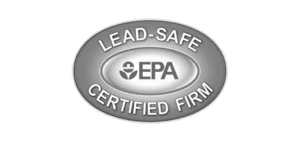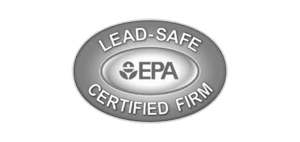Water damage can wreak havoc on your property, whether it’s caused by burst pipes, leaky roofs, or natural disasters. But what is the first step to take when dealing with water damage? Understanding the initial actions to mitigate water damage is crucial for effective restoration and minimizing its long-term impact.
In this article, we will explore the crucial first step to take when dealing with water damage. We’ll guide you through the process of assessing the situation, ensuring safety, stopping the source of water, removing excess water, and properly drying the affected area.
Key Takeaways
- The first step to water damage restoration is crucial for mitigating further damage and ensuring a successful restoration process.
- Assess the situation and ensure safety before diving into the restoration process.
- Stop the source of water and remove any excess water from the affected area.
- Thoroughly dry out the affected area to prevent mold growth and further structural damage.
- Consult professionals for larger or more severe water damage situations.
If you’re dealing with water damage, taking the right steps early on can make a big difference in the outcome of your restoration process. Knowing the first step to take can help you quickly and effectively mitigate the damage and get on the path to a successful water damage restoration.
The first step to water damage restoration is to act quickly. When water damage occurs, the longer you wait to address it, the greater the potential for long-term damage to your property and your health. The key to minimizing the impact of water damage is to take action right away.
So, what is the first step to water damage restoration? The first step is to assess the situation and ensure safety. Once you’ve determined the extent of the damage and the potential hazards involved, you can take the necessary steps to address the water damage and prevent further damage from occurring.
Key Takeaways:
- Act quickly when dealing with water damage to minimize long-term damage.
- The first step to water damage restoration is to assess the situation and ensure safety.
- Identify potential hazards and take necessary precautionary measures before beginning the restoration process.
- By understanding the first step to water damage restoration, you can effectively address water damage and minimize its long-term impact.
- Remember to consult professionals for larger or more severe water damage situations.
Assess the situation and ensure safety
The first step to tackling water damage is to assess the situation and ensure safety. Before entering the affected area, ensure that any electrical power has been turned off to minimize the risk of electrocution. It’s also important to wear protective gear, such as gloves and a mask, to prevent exposure to any harmful contaminants.
Start by evaluating the extent of the water damage. Is it a small leak or a major flood? Identifying the source of the water and the extent of the damage will help you determine the appropriate course of action. For example, if the damage is caused by a burst pipe, the water supply should be shut off immediately.
Additionally, take note of any potential safety hazards such as slipping or falling due to wet floors or weakened structures. If the damage is significant, it’s recommended to call a professional to assess and mitigate the situation.
| Assessing Water Damage Checklist | |
|---|---|
| Identify the source of water damage | Assess water damage |
| Turn off any electrical power | Safety measures |
| Wear protective gear | Safety measures |
| Evaluate the extent of the damage | Evaluate damage |
| Identify potential safety hazards | Safety measures |
By taking the necessary safety measures and assessing the extent of the water damage, you can effectively plan and execute the next steps for water damage restoration.
Stop the source of water and remove excess water
Now that you’ve assessed the extent of the water damage and ensured safety, the next crucial step in mitigating water damage is to stop the source of water and remove any excess water from the affected area. The longer the water remains, the more extensive the damage, and the more challenging the restoration process becomes.
First, identify the source of water and turn it off. This could be as simple as turning off the valve under the sink or shutting off the main water supply if the water damage is more severe. If you’re unsure, consult a plumber or professional to assist.
Next, remove any standing water using a wet vacuum or pump. Be sure to wear protective gear such as rubber boots and gloves to prevent any potential electrical hazards or exposure to contaminated water. It’s essential to extract as much water as possible to prevent further damage and prevent mold growth.
Once you’ve removed any standing water, use towels or mops to soak up any excess moisture in the affected area. Be sure to dispose of any damaged materials or belongings in sealed plastic bags to prevent the spread of contaminants.
Remember, proper water extraction is crucial in mitigating water damage. If you’re dealing with extensive water damage, it’s best to consult a professional water damage restoration company to ensure proper extraction and prevent any potential long-term damage.
Dry and dehumidify the affected area
After removing the excess water from the affected area, it is crucial to dry and dehumidify it to prevent the growth of molds that could cause further damage to your property. Drying the area ensures that the water is completely removed and prevents mold growth from damaging your walls, floors, and ceilings.
Proper ventilation and air circulation are key to drying the area quickly and efficiently. Open all windows and doors to allow air to circulate freely. You can also use industrial-strength fans to increase air circulation, which will speed up the drying process. Place the fans in strategic locations to ensure that the air reaches all areas of the affected room.
Dehumidification is crucial in removing any remaining moisture from the air that may cause mold growth. Use a dehumidifier to remove the moisture from the air. A dehumidifier will extract moisture from the atmosphere, helping to reduce humidity levels in the affected area. Be sure to empty the dehumidifier’s water tank regularly.
If you’re unsure about the drying and dehumidification process, consider consulting a professional water damage restoration company. Professionals have the experience, equipment, and expertise to effectively dry and dehumidify your property, addressing any potential long-term damage.
Conclusion
Now that you understand the crucial first steps to take when dealing with water damage, you can approach the restoration process with confidence. Remember to always prioritize safety and assess the situation before taking any action. By following the steps outlined in this article, you can effectively mitigate further damage and restore your property to its pre-damaged state.
However, if you are faced with a larger or more severe water damage situation, it is always recommended to consult with professionals. They have the expertise and equipment necessary to handle even the most extensive water damage situations and ensure a successful restoration process.
Don’t wait until it’s too late. Act quickly and take the necessary steps to address water damage as soon as possible. By doing so, you can save yourself from long-term structural damage and costly repairs.
FAQ
What is the first step to water damage?
The first step to water damage is assessing the situation and ensuring safety. Evaluate the extent of the damage and prioritize safety measures before proceeding with restoration.
How do I assess water damage and ensure safety?
To assess water damage and ensure safety, carefully evaluate the affected area for potential hazards such as electrical issues or structural instability. Take necessary precautionary measures and wear protective gear if needed.
How can I stop the source of water and remove excess water?
To stop the source of water, shut off the water supply if possible or fix any leaks or flooding. Next, remove excess water using pumps, wet vacuums, or mops and buckets. Properly dispose of the extracted water to prevent further damage.
What should I do to dry and dehumidify the affected area?
After removing excess water, use fans, dehumidifiers, and proper ventilation to dry out the affected area. Ensure thorough drying to prevent mold growth and further structural damage. Monitor humidity levels and make adjustments as necessary.
What is the importance of drying out the affected area?
Drying out the affected area is crucial to prevent mold growth, which can lead to health problems and further damage. Proper drying also helps restore the structural integrity of the affected materials and prevents long-term issues.
Can I handle water damage restoration on my own?
For smaller water damage incidents, you may be able to address the restoration process on your own. However, for larger or more severe water damage situations, it is recommended to consult professionals who have expertise and specialized equipment to ensure thorough restoration.










